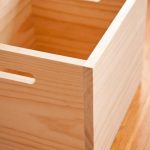Are you struggling with white mold on your old woodworking tools? It’s essential to know how to clean white mold on old woodworking tools to ensure their longevity and efficiency. Over time, moisture and humidity can cause white mold to develop on the surface of these tools, potentially posing health risks and compromising their functionality. In this article, we will guide you through the process of identifying, cleaning, and maintaining old woodworking tools affected by white mold.
White mold on old woodworking tools can not only be unsightly but also detrimental to their performance. It is crucial to address this issue promptly to prevent further damage and ensure the safety of anyone using these tools. Knowing how to identify the signs of white mold and understanding the potential health risks associated with it is paramount in maintaining a safe working environment.
To effectively remove white mold from your old woodworking tools, you will need specific cleaning supplies and equipment. From a stiff brush and gloves to vinegar and a clean cloth, having the right tools at your disposal is vital in restoring these items back to their original condition. In the following sections, we will provide a comprehensive list of all necessary materials needed for this cleaning process while offering detailed step-by-step instructions for optimal results.
Identifying White Mold on Woodworking Tools
When it comes to woodworking tools, the presence of white mold can be a common issue, especially if the tools are old or have been stored in damp environments. One of the primary visual cues of white mold is the appearance of fuzzy or powdery white spots on the surface of the tools.
These spots may also appear in patches or clusters, often spreading over time if not addressed promptly. Another sign to look out for is a musty or unpleasant odor emanating from the tools, which can indicate the presence of mold.
In addition to visual cues, it’s also essential to be aware of potential health risks associated with white mold exposure. Inhaling mold spores can lead to respiratory issues, allergic reactions, and other health concerns. Therefore, it’s crucial to take these risks seriously and address any signs of white mold on woodworking tools promptly and effectively.
For individuals who frequently work with woodworking tools or have a collection of antique or vintage equipment, being able to identify white mold and understand its potential health risks is an important first step in maintaining a safe and healthy workspace.
| Signs of White Mold | Health Risks |
|---|---|
| Fuzzy or powdery white spots on the surface | Respiratory issues from inhaling mold spores |
| Patches or clusters of white mold | Allergic reactions |
| Musty odor emanating from the tools | Other potential health concerns |
Tools and Materials Needed
Gather Your Cleaning Supplies
Before you start cleaning white mold from your old woodworking tools, it’s important to gather all the necessary supplies and tools. You will need a stiff brush to scrub away the mold, gloves to protect your hands from the mold and cleaning solutions, vinegar to kill the mold spores, and a clean cloth for wiping down the tools after cleaning.
Stiff Brush
A stiff brush is essential for removing white mold from woodworking tools. Make sure the bristles are firm enough to scrub away the mold without causing damage to the tool’s surface.
Gloves
Wearing gloves is crucial when dealing with molds. Gloves will protect your hands from coming into direct contact with white mold and any cleaning solutions used in the process.
Vinegar and Clean Cloth
Vinegar is an effective natural solution for killing mold spores. Mix equal parts of water and vinegar in a spray bottle and use a clean cloth to wipe down the surfaces of your woodworking tools after brushing away the mold.
By having these essential tools and materials on hand, you can effectively clean white mold from your old woodworking tools, ensuring their longevity and safe use in your workshop.
Remember that proper ventilation while using vinegar is essential to reduce any strong odors. Also, always dispose of used cloths properly after cleaning as they may contain live mold spores.
Step-by-Step Cleaning Process
When it comes to cleaning white mold from old woodworking tools, it’s essential to take the proper steps to ensure that the removal process is effective and safe. Here’s a step-by-step guide on how to clean white mold from old woodworking tools:
1. Preparation: Start by gathering all the necessary supplies, including a stiff brush, gloves, vinegar, and a clean cloth. Ensure that you are working in a well-ventilated area or outdoors to minimize exposure to mold spores.
2. Brushing off the mold: Use a stiff brush to gently remove any visible white mold from the surface of the woodworking tools. Be sure to wear gloves during this process to protect your skin from contact with mold.
3. Vinegar solution: Mix a solution of equal parts water and vinegar in a spray bottle. Spray this solution onto the affected areas of the tools and allow it to sit for several minutes. The acidity of vinegar helps kill mold spores and prevent their regrowth.
4. Wiping down the tools: After allowing the vinegar solution to sit, use a clean cloth to wipe down the woodworking tools thoroughly. This will help remove any remaining mold residue and vinegar solution from the surfaces.
5. Drying and inspection: Once you have cleaned the tools, allow them to air dry completely before inspecting them for any lingering traces of white mold. If needed, repeat the cleaning process until all mold is removed.
The cleaning process outlined above provides an effective method for removing white mold from old woodworking tools while minimizing health risks associated with exposure to mold spores.
| Tools and Materials | Cleaning Supplies |
|---|---|
| Stiff brush | Gloves |
| Vinegar | Clean cloth |
Preventative Measures
Preventing the recurrence of white mold on woodworking tools is essential to maintaining their longevity and ensuring they remain in good working condition. By following some simple tips for proper storage and regular maintenance, you can minimize the risk of white mold developing on your valuable tools.
To prevent white mold from growing on your woodworking tools, consider implementing the following preventative measures:
- Store tools in a clean, dry area: Moisture is a primary factor in the growth of mold, so it’s important to store your woodworking tools in a clean, dry environment. Consider using a dehumidifier in your workshop or storing your tools in an airtight container to prevent moisture buildup.
- Clean tools after each use: After using your woodworking tools, take the time to clean them thoroughly to remove any sawdust or debris. This will not only prevent mold growth but also help maintain the sharpness and quality of the tools.
- Apply a protective coating: Consider applying a protective coating such as oil or wax to your woodworking tools to create a barrier that inhibits mold growth. Be sure to follow the manufacturer’s recommendations for application and reapplication intervals.
By taking these preventative measures, you can significantly reduce the chances of white mold developing on your woodworking tools and ensure they remain in top condition for years to come.
Restoring the Tools
Inspecting the Tools
After cleaning your old woodworking tools to remove white mold, it’s essential to thoroughly inspect each tool for any signs of damage or wear. Check for any rust, corrosion, or dullness on metal surfaces. For wooden handles, look for cracks or splintering that may have occurred over time.
Polishing Metal Surfaces
To restore the luster and shine of metal surfaces on your woodworking tools, consider using a metal polish specifically designed for removing tarnish and restoring brightness. Apply a small amount of polish to a clean cloth and gently rub it onto the metal surfaces in a circular motion. Once the surface is evenly covered with polish, use a separate clean cloth to buff away any excess until it shines.
Oiling Wooden Handles
Wooden handles on old woodworking tools may benefit from conditioning and protection in the form of wood oil. Select a high-quality wood oil that is suitable for the type of wood used in your tool handles. Apply a small amount of oil to a clean cloth and rub it into the wooden handles in the direction of the wood grain.
Allow the oil to penetrate and nourish the wood before wiping away any excess. This will help protect the wood from drying out and prevent future damage.
By following these techniques for restoring your woodworking tools after cleaning white mold, you can ensure that they not only look better but also function effectively for many more years to come.
Remember that when attempting how to clean white mold on old woodworking tools, always take safety precautions by wearing gloves and working in a well-ventilated area during both cleaning and restoration processes.
Safety Considerations
When cleaning white mold from old woodworking tools, it is important to prioritize safety precautions to protect yourself from potential health risks. Proper ventilation and the use of protective gear are essential for safeguarding your health while cleaning and maintaining your tools. Here’s a list of safety considerations to keep in mind:
- Proper Ventilation: Before you begin the cleaning process, ensure that you are working in a well-ventilated area. Open windows and doors to allow adequate airflow and prevent the inhalation of mold spores. Consider using a fan to improve air circulation in the workspace.
- Protective Gear: Wear gloves, a mask, and safety goggles to shield yourself from exposure to mold spores and cleaning agents. Gloves will protect your skin from direct contact with mold, while a mask will prevent you from inhaling airborne spores. Safety goggles are crucial for protecting your eyes from potential splashes of cleaning solutions.
- Disposal of Cleaning Supplies: Properly dispose of any used cleaning materials, such as cloths or brushes, that come into contact with white mold. Seal them in a plastic bag before discarding them to prevent the spread of mold spores.
By following these safety considerations, you can effectively clean white mold from old woodworking tools while minimizing the risks to your health and well-being.
For further reading on safety guidelines when dealing with white mold on woodworking tools, refer to reputable sources such as occupational safety websites or forums dedicated to woodworking enthusiasts. It is always best to stay informed about the latest safety practices when handling potentially hazardous materials.
Additional Resources
In conclusion, cleaning white mold from old woodworking tools is essential for preserving their functionality and appearance. By following the step-by-step cleaning process outlined in this article and using the necessary tools and materials, individuals can effectively remove white mold and restore their tools to their original condition. Additionally, taking preventative measures such as proper storage and regular maintenance can help prevent the recurrence of white mold on woodworking tools in the future.
It is important to keep safety considerations in mind while cleaning white mold from woodworking tools. Proper ventilation and the use of protective gear such as gloves are crucial in order to avoid potential health risks associated with exposure to white mold spores.
For those who want to delve deeper into the topic of cleaning old woodworking tools with white mold, there are additional resources available. References to further reading, helpful videos, or other resources can provide valuable information and guidance for maintaining and preserving old woodworking tools.
By exploring these resources, individuals can gain a more comprehensive understanding of how to properly care for their tools and keep them free from white mold. Overall, with proper care and attention, old woodworking tools can be maintained for years to come, allowing enthusiasts to continue using them for their intended purpose.
Frequently Asked Questions
What Kills White Mold on Wood?
White mold on wood can be killed by using a mixture of water and detergent to scrub the affected area. You can also use a solution of bleach and water, but make sure to wear protective gear and ventilate the area. After applying the solution, allow it to sit for some time before scrubbing and then drying the wood thoroughly.
How Do You Get Rid of Mold on Woodwork?
To get rid of mold on woodwork, it’s important to first identify the source of moisture and address it to prevent future mold growth. Then, you can clean the affected woodwork with a solution of warm water and detergent or a commercial mold cleaner. After cleaning, ensure that the woodwork is completely dry to prevent further mold growth.
How Do You Treat White Mold on Wood Studs?
Treating white mold on wood studs involves addressing any sources of moisture that may be contributing to the mold growth. Once this is addressed, you can use a stiff brush to scrub the affected areas with warm water and detergent or a commercial mold cleaner.
Make sure to allow the wood studs to dry thoroughly after cleaning. If the problem persists, professional assistance may be necessary.

Hi everyone! I’m a woodworker and blogger, and this is my woodworking blog. In my blog, I share tips and tricks for woodworkers of all skill levels, as well as project ideas that you can try yourself.





